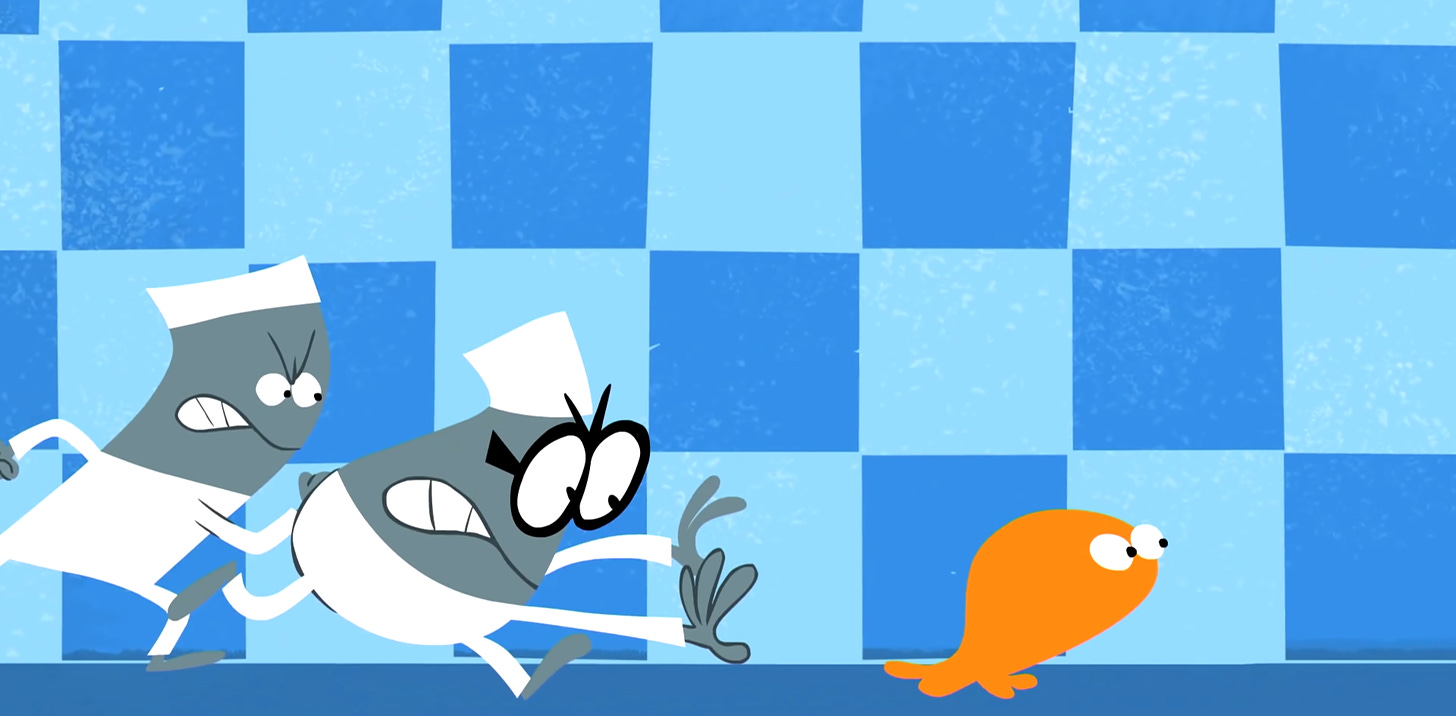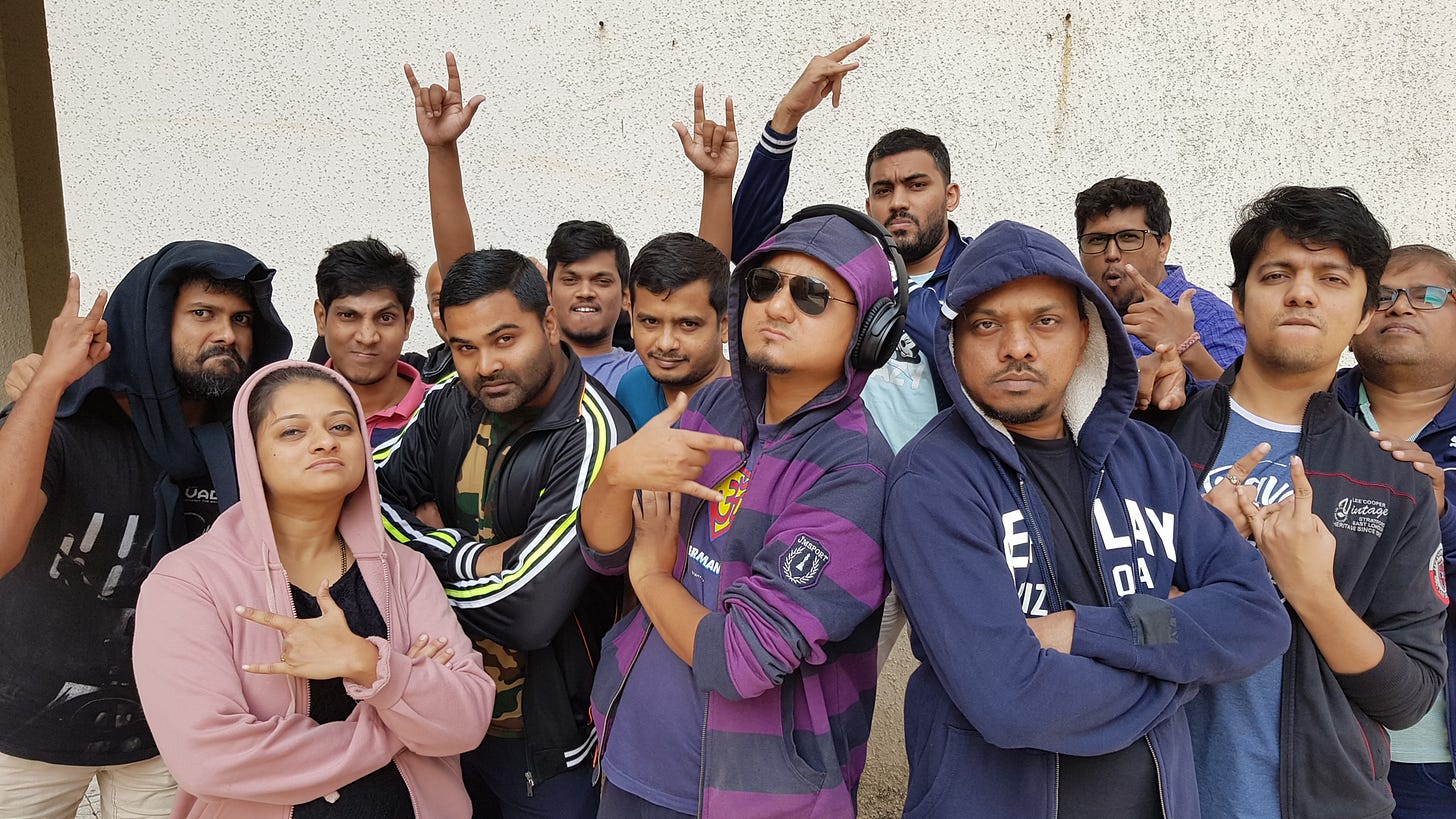+1: Our Favorite Animators in India
Talking to Vaibhav Studios about success, process and the state of Indian animation.
Welcome to the very first bonus issue of the Animation Obsessive newsletter! We’re glad to have you.
For our issue this week, we’ve landed an interview with Vaibhav Studios of Mumbai. You might know the team from its global hit Lamput, a micro-length series that’s aired on Cartoon Network in most countries since 2017. The studio boasts a nearly 20-year track record, though, with a long list of local successes in India.
These are some of India’s most unique and talented animators. They bring a real charm and sense of fun to every medium they work in — whether it be 2D, 3D, stop-motion or their own techniques (more on those later).
Recently, we reached out to the studio’s founder and director, Vaibhav Kumaresh. He was kind enough to tell us the history of his studio and Lamput, while offering insights into his team’s hilarious work for Nickelodeon India, the state of Indian animation and the future of Vaibhav Studios.
Enjoy!
Animation Obsessive: Could you give us the Vaibhav Studios origin story? Your company has blown up internationally in recent years, but you guys have actually been hard at work since 2003.
Vaibhav Kumaresh: Yes, Lamput for Cartoon Network APAC has been our very first creation to make a mark globally. However, since the early years, we have had immense success locally with our creations like Simpoo for Channel V India, Chulbuli for Clinic Plus, Buladi (an AIDS awareness campaign for the West Bengal government) and Birthday Bhoot for Toon Disney. By default, I would say we are a very local, Indian “desi”1 studio. And we love it that way.
Vaibhav Studios was born out of a strong desire to tell longer stories (compared to the 30-seconders we were creating for TV commercials). I quit my five-year job to work on a short, 10-minute children’s animated film. And that gave us the confidence to continue making films on our own. That’s how the studio was born in 2003. Starting with a mini core team of two people, we are a slightly “less mini” core team of 17 today.
What’s the setup of your studio right now, especially given the pandemic?
A majority of artists have adapted very well to working remotely from their respective homes across the country. I am glad that everyone is safe with their respective families during this challenging period. Work is going as smooth as it was before, so no complaints at all! A small unit of four artists (myself included) is currently working physically from the studio.
As you said, one of Vaibhav Studios’ biggest hits has been the mini-cartoon Lamput for Cartoon Network. How did that series come about?
Lamput was born out of joblessness. Amid intense bouts of work on commissioned projects, we do at times find ourselves free and “jobless” for small pockets of time in between. I believe that’s a great time to fall back on one’s wish list and contemplate on the kind of work one would like to do.
During one such period (probably around 2012), I was wanting to do something with morphing shapes. I began to weave a small premise for the idea and “the gooey, orange nutcase that had escaped from an asylum with two medical cops trying to catch him” emerged from there. Since Nickelodeon India was one of our old clients, I thought I would pitch it to them. They had an orange blob for their logo and I thought it would be a perfect match! However, that wasn’t the case. Nickelodeon did not pick it up.
Two years later, I heard that Cartoon Network Asia Pacific was looking for content and I pitched Lamput to them. They loved it and commissioned a pilot of six 15-second micro shorts. Director Anand Babu joined us then and took Lamput to another level. The shorts worked amazingly well for Cartoon Network and being non-dialogue greatly helped the show go global.
The team at Cartoon Network APAC has been hugely supportive and encouraging since the start and, thanks to that, we have won loads of awards, an Emmy nomination and are currently producing Lamput Season 4!
New to the Animation Obsessive newsletter? You can sign up for free to receive our weekly Sunday edition — and it only takes a second. Keep up with the wide world of animation:
Since they started airing in 2018, your studio’s idents for Nickelodeon have been consistent hits in India. Could you talk about how you got the opportunity to create them?
The Nickelodeon idents campaign, too, evolved out of our wish list, as we wanted to do something entirely hand-made, crude and non-digital. We created two different pitches. One was using flat, animated paper cutouts in everyday-life spaces. The other was based on a short film created by Anand Babu — a mad, musical series with live food products performing. Thankfully, this time, Nickelodeon loved them! Both the pitches were sold!
So, over a span of two years, our team ended up creating close to nine animated short idents for Nick India. These shorts not only went hugely viral in India but also won loads of awards all across the globe for Nickelodeon.
When we shared your Mom and Brat ident on Twitter in early August, it became our most-liked tweet of all time. Its combination of stop-motion and hand-drawn animation is brilliant — can you tell us about how it was made?
Mom and Brat was part of the paper cutout pitch I mentioned earlier. The medium itself gave rise to many story ideas and gags. Once we had a rough animatic in place, the action was all hand-drawn on chart paper. Every key and in-between doodle was then cut out. Metal supports were inserted behind them to make them stand.
Quick mini sets were built using objects we had around us. The paper cutouts were inserted one by one and shot using the replacement technique in stop-motion animation. We did use a flip-book in one of the shots, which was entirely hand-drawn and flipped live during the shoot.
The Rap and Idli Song idents for Nickelodeon use a blend of 2D animation and puppetry that we’ve never seen before. Could you talk about the process behind creating those animations?
This was the series inspired by Anand's personal short film. In the Idli short, we had real food rigged with armatures and strings. These were puppeteer-ed live to pre-composed music tracks. Expressions and lip sync were painted on to it digitally after the shoot. For the Rap ident, we built realistic-looking food products out of resin to avoid wastage of food. They had in-built armatures to allow us to manoeuvre them.
Whether your team uses 2D or 3D or stop-motion animation, the work always has a fun, lively spirit that stands out as being from Vaibhav Studios. Is there a specific look and feel that your team tries to instill in its animation?
I think we all are born with certain “default settings” if I may call it that. Different things excite or inspire different people. As a team, all we try to do is stay true to what excites us, and express that in our work. So, whether it’s me directing a film or Anand or Dapun or Ajit, I encourage them to just follow that. And, yes, we do reflect a lot of energies and inspiration off each other while making films.
We do consciously choose certain mediums of animation based on what we think works best for the story we want to tell. But, no, we never intentionally try to force-fit fun and liveliness into our films. It just happens naturally. It’s a “manufacturing defect.” And I’m glad it shows in our films.
At Annecy this year, your studio won the Disney+ Prize to help develop the series pitch Kuttan – The Medicine Boy. It caught our eye from the first teaser image — what can we look forward to from that series?
Kuttan – The Medicine Boy is an episodic show created by Anand Babu. The concept originated from a wish to see stories from ancient Kerala (South India) — which is full of medicine men, action and magic! Kuttan is a sentient “basket and pot character” brought to life by sorcery. Under the tutelage of a village doctor named Vaidyan, he grows up to be Kuttan, the medicine boy!
We are currently developing the bible for Season 1, comprising 10 episodes of 30 minutes each. The studio wishes to raise funds to produce the very first episode of this hand-drawn, 2D-animated show.
How do you feel about the direction of Indian animation in recent years? Are there many opportunities for animation studios that make original IP instead of working in outsourcing?
Children’s TV channels in India are filled with local animated shows that are rating pretty well on their respective networks. Some of our filmmakers have been very successful in international festival circuits with their independent short films and there are abundant opportunities in the micro-short and short formats like TV commercials, channel idents and music videos.
Sadly, we as storytellers haven’t yet been able to script a success story when it comes to producing long-format, feature-length films. Even our so-called “successful” TV shows are pretty mediocre in content and design and do not appeal to an audience beyond age 10. And that hurts me immensely.
I believe the Asian Indian audience across the globe is a huge market waiting for a beautiful animated Indian film. We haven’t learnt to make and distribute it well enough yet!
Besides Kuttan, what does the future hold for Vaibhav Studios?
As mentioned earlier, long-format storytelling is where our heart lies. Over the past 15 years, our team has been slowly and steadily producing our in-house animated property Return of the Jungle. Production on the first installment, a 100-minute feature film in Hindi, is scheduled to wrap up in 2022. It’s a film that’s very dear to us. It is also the change in Indian animation that WE wish to see. We look forward to getting it out soon.
We’d like to thank Vaibhav Kumaresh for taking time out of his busy schedule to chat with us. For more of his team’s great animation, check out Vaibhav Studios’ YouTube, Instagram and Facebook pages.
If you’ve enjoyed this bonus issue, you can check back next Thursday for another one! This is the first of three that we’re rolling out for free through September 16. Bonus issues will continue after that date — but only for paying subscribers (members). If you’d like to keep reading them, now is a great time to join:
Thanks for reading! We’ll be back on Sunday with our usual roundup of animation news, retro lookbacks and more. If you missed last Sunday’s edition, we went in-depth on retro candy commercials from Japan, the Soviet Winnie-the-Pooh cartoons and the ambitions of Soyuzmultfilm.
Hope to see you again soon!
“Desi” is a Hindi word that refers to people and things from India. Depending on the context, it has many different implications. One is a certain indigenous, homespun quality.






